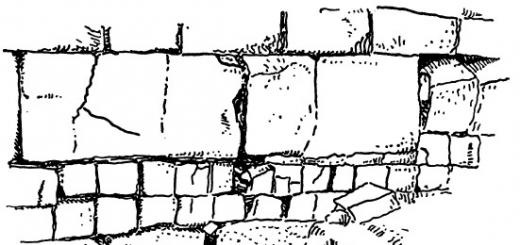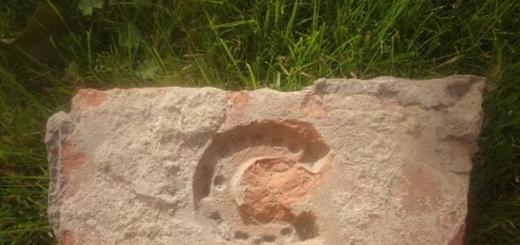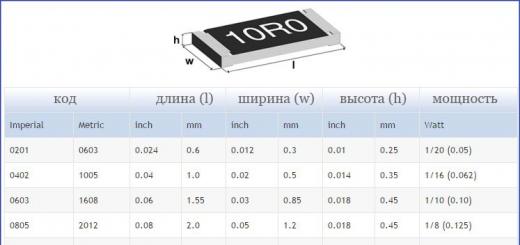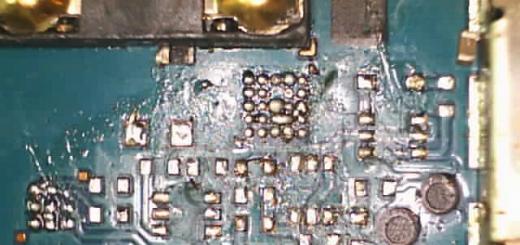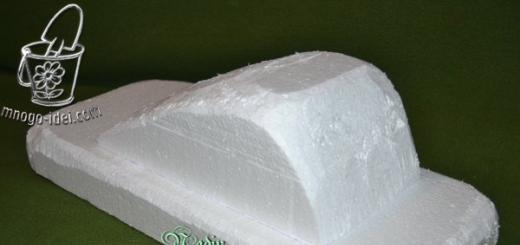IN THE BRICK CHRONICLE OF ST. PETERSBURG. "P&V"
I continue to dig online for information and stories about bricks literally lying under the feet of St. Petersburg residents.
By the way, three years ago I already talked about bricks with the “PiV” brand.
Let me remind you what the conversation was about.
STORY THREE. "P&V"
While taking a walk with my daughter towards the Gulf of Finland, we found a fragment of the wall of a dismantled building with clear marks on the brick surface in the form of the letters “PiV” and above “III”.
Puzzled by the question of which manufacturer or customer owns the brand, I went online.
Here's what I found:
The "PiV" stamps are distinguished by the Roman "I, II, III" depending on the serial number of the plant and variations of dots after the letters.
The owners of the plant are Mikhail Andreevich Petrov and Leopold Adolfovich Vitovsky.
The plant that produced bricks with the “PiV” brand belonged to Mikhail Andreevich Petrov and Leopold Adolfovich Vitovsky. M.A. Petrov’s plant on the Malaya Izhorka River near Kormchino has been known since 1864. (used the “MP” brand), and L.A. Vitovsky’s factories (3 in total), purchased from various owners (see “L.A.V.” brand), judging by the descriptions, were located in the same place. Thus, it is possible that somewhere in the 1880s, Mr. Petrov’s plant acquired a co-owner (L.A. Vitovsky), and the new “PiV” stamp (with and without dots) began to be used on bricks in various frames and with numbers of various alphabets (Roman I-III indicated plant numbers). After the nationalization of Mr. Vitovsky's factories in 1920. On their basis, the Krasny Brick plant appeared, which operated until 1941.
The mark was stamped with this thing: Dimensions (15.5 cm by 7.5 cm) material - brass.
The brick factory itself was not so close to St. Petersburg.
Location: Russia, Leningrad region.
Latitude: 59°46"26.37"N
Longitude: 30°36"54.83"E
During World War II, the plant was located several kilometers from the front line.
After the war, little remained of the village - just like other suburbs of Kolpino. As a result of reconstruction, good brick houses of the Stalinist type were built on the picturesque river bank. In the village there were two streets (one - Prirechnaya, the name of the second is not established), a bathhouse, a couple of shops, a small post office and two booths with pay phones.
In 1964, by the decision of the executive committee of the Leningrad City Council, it was proposed that Krasny Kirpichnik no longer be identified as a separate settlement, but should henceforth be considered merged with the village. Pontoon, located on the other side of the river. But due to its isolated position, the village remained a separate settlement in the minds of local residents until the end of its days.
At the end of the 80s, the Krasny Bricknik plant became a joint Russian-German enterprise Pobeda-Knauf. For unknown reasons, the village was resettled in 1987.
After the blockade was broken, the plant began to work at full capacity, producing bricks for the restoration of destroyed buildings in Leningrad, including the village of Pontonny. The workforce at this plant was made up of German prisoners. The plant existed until the mid-70s.
Almost three years later, I returned again to the very place where I saw this fragment of a brick wall and which I had completely forgotten about, but I discovered it again, like a post on my blog about them))
Don’t forget to leave your comments below, which I’m always happy to hear and will definitely answer each one.
Previous posts about bricks
"Ya.Petrov 66" -
Yesterday, while walking with our little ones, we walked along the Southern Road to its very end at the pier with a view of the closing span of the WHSD and the new Zenit Arena stadium under construction (formerly the Kirov Stadium).
Here, on an unkempt embankment, which in its heyday was a beach for sunbathing and swimming. Nowadays, here shady individuals burn kebabs on barbecues and drink strong or beer.
About 15-16 years ago I wandered in these places and further to the tip of Krestovsky where a belfry with an electric organ was being built and observed huge scatterings of historical branded bricks brought and dumped at the water's edge. Now it is not possible to get to the tip of the island. Due to construction, everything is fenced off and access and access restrictions have been introduced. And as you can judge from Google satellite maps, at the tip of the island, soil has been filled, concrete platforms and, most likely, all the bricks - the “brick flash drives of St. Petersburg” will remain forever buried under all this long-term new construction, which has already covered itself with scandals and financial fraud. But I’m not talking about that, I’m talking about St. Petersburg...
My attempts to find something interesting were limited to the territory of this abandoned and littered beach.
Unfortunately, I was unable to select and bring it to my home collection and only took photographs. As a rule, the local brick is badly broken or licked by a river wave and there are practically no marks. But you can find some of the whole thing, and armed with a pick and shovel there is a chance to hook several quite decent specimens.
Brick "R.R." framed and with house number No. 47.
Most likely, the mark bears the initials of Vladimir Aleksandrovich, Ratkov-Razhnov (1834-1912) - Russian public figure, entrepreneur and industrialist, senator, active privy councilor. Belongs to an ancient noble family of the Kostroma province.
In 1857 he graduated from the Faculty of Law of St. Petersburg University with the degree of candidate of laws and entered the civil service in the office of the Senate. He held the positions of assistant secretary and chief secretary in various departments.
Nobleman, active privy councilor, lawyer, public and statesman. Mayor of St. Petersburg (1893-1898), senator (since 1904), owner of the largest Gromov Timber Trade Exchange in Russia.
Since 1874, the owner of the company "Gromov and Kє" (processing and trade in timber and lumber products) and the largest Gromov Timber Exchange in Russia (sawmills: Shlisselburgsky tract, 57, Orlovskaya st., 1; warehouse - Bolshaya Nevka embankment , 13; wholesale offices - Millionnaya St., 7, Gelsingforsskaya St., 4); co-owner of the Lensky and Miass gold industry. partnerships, Verkhne-Amur gold industry. company, St. Petersburg Private commercial jar. Owner approx. 20 apartment buildings in St. Petersburg. (Dvortsovaya embankment, 8, Dumskaya st., 7, Nevsky prosp., 152, Gorokhovaya st., 79, etc.)
At home:
Kirochnaya st./St. Petersburg, 34
Kirochnaya st./St. Petersburg, 32
Pestelya st./St. Petersburg, no. 13
Pestelya st./St. Petersburg, no. 15
He was buried together with his son Ilya (born 1907) and brother Alexey Alexandrovich Ratkov-Rozhnov (1829-1909).
Russia. Saint Petersburg. Necropolis of the 18th century. Corner of Betancourt and Rossiyevskaya paths. Chapel in Byzantine style, 1910s.
His heirs owned the company "Gromov and Co."
The plant was located in the Shlisselburg district, in the village of Malye Porogi (1896-1917)
________________________________________ ________________________
BRICK plant "ENERGY"
The owner of the plant is Nikolai Fedorovich Nikolaev or/and (A. Kanegisseru (?)). Plant in Izhora. Office on Serdobolskaya street 4-6
And this is where the intrigue creeps in!
Judging by Wikipedia, Uritsky was killed by Leonid Kanegisser.
(pictured on the right: son of A. Kannegiesser, on the left S. Yesenin)
And, again, according to information from there, his father was Akaki Samuilovich Kanegisser, the owner of this brick factory.
Years of production: 1910s.
BRICK "Ukke and Co"
Several buildings of the Red Triangle and its dormitory were built from such bricks. The brick factory belonged to the company "Ukke and Co", which was owned by a nobleman (from the Russified Germans), a member of the board of the Society of the Borovichi Plant of Fire-Resistant and Acid-Resistant Products, Ludwig Yulievich Ukke. They were in 1887. A brick factory, previously built in the 1860s by Nikolai Kochetov near the village of Ust-Izhora, was purchased and rebuilt. In the same year, a second plant appeared in the village of Ust-Tosna, and in 1897. - and the third in the village of Ust-Slavyanka. Ucke's companions were I.V. Schmidt and A.E. Stritter. Noteworthy is the variety of stamp options (at least two dozen variations) with different placement of the number (to the right or left of the inscription “Ukke” and Ukke and Co”), as well as the use of the letters “C”, “T” and “B” in the upper semicircle. The letter "C" means the "Slavyansky" plant, which was located in Ust_Slavyankei and which the Ukke company owned jointly with P.A. Geiermans. The letter "T" indicates the "Tosnensky" plant in Tosn, and the "B" possibly refers to the manager Bogdanovich. It is quite possible that the Tosnensky plant also used the mark “U.Z.U” (“Ust_Tosnensky Ukke Plant”).
They mention that "... On Zhdanovskaya embankment they are demolishing an old house where there was a certain medical facility." The Strelin bricks are probably from this building.
The owner of the plant is Makariy Timofeevich Strelin. Years of production: 1875-1900. The owner of the plant is Alexey Makarovich Strelin. Years of production 1897-1910s. The owner of the plant is Vasily Makarovich Strelin. Year of production 1910. Office at 5th Rozhdestvenskaya, 11
A brick was found on the roof of a house on Kolomenskaya Street. It is also present in the building of the hospital morgue on Troitsky Prospekt and in the buildings of an abandoned quarter on Bratskaya Street (there are also bricks from Strelina Br. there). Produced at the factories of the peasant (and later merchant and hereditary honorary citizen) Makariy Timofeevich Strelin. One of the factories, built in 1875, was located along the Slavyanka River in the village of Ust-Izhora and was purchased from merchant Anna Semyonovna Vandrukhova in 1882. The second plant was located in the Ovtsino colony on the right bank of the Neva and was built in 1897. The business was subsequently continued by sons Alexey (using the brand “AMC”) and Vasily Makarovich. Most likely, around 1910, the joint mark “Br.Strelina” appeared.”
________________________________________ _______________________________________
I look forward to your comments below. What kind of bricks have you come across? What brands are you interested in?
Brick stamps are a separate type of historical information; they preserve the names of the owners of enterprises, representatives of the country's industrial elite. Many stamps indicate the location of enterprises.
Many branded bricks are perceived as examples of the technical aesthetics of those years.
By now, collecting branded bricks has become quite common. This type of collecting even got its own name - bricophilia, from the English brick - brick. The name is not entirely apt. In this case, it is not just the samples of brick production that are of interest, but the letters or other marks stamped on them that brick manufacturers used to mark their products.
In Russia, marks on bricks appeared by the middle of the 17th century. It was a relief image of the state eagle in a rectangular frame.
Stylized images of animals (animal motifs) were used for brickmarks until the 1690s.
Subsequently, bricks began to be marked with letters of the Russian alphabet, using only one letter at first, for example, in the brickworks of Moscow already in the 1680s, marks measuring 3 x 3 cm were found, representing the letter D. At the beginning of the next century, marks with the letters P and N appeared.
It is believed that single-letter marks lasted until the 1730s. They were shaped like a square. But this conclusion was made based on a study of brickwork in Moscow. In St. Petersburg, the marking of bricks with one letter, indicating the name of the owner of the brick factory, continued much longer. For example, a mark with the letter C is associated with bricks from a factory founded by Fyodor Nikiforovich Slepushkin (1763 - 1848), better known as a self-taught poet. Moreover, the mark on his products is not square, but elongated.
With the development of brickmaking, single-letter stamps were unable to provide brick makers with the only type that belonged to them. Since the end of the 18th century, the number of letters in the brands has increased, indicating the first, patronymic and last name of the owner. Sometimes the full name is given. Often, instead of initials, the brand consists of the name of the plant, for example: Moika, Izhora, Neva, or Elizavetino, Kolpino, or the abbreviation of the manufacturing company, for example, T.O.S.M. -. Partnership for processing building materials.
Animalistic images - double-headed eagles, are found on products of the imperial brick factories - from the time of Nicholas I in a rectangular frame, Alexander I - in a circle, Alexander III - in an oval outline.

Among other images, the imprint of a horseshoe on the products of the Podkova plant by E.P. Spechinskaya and her heirs, or the symbolic image of a star, between the initials of the owner - the Zvezda plant, F.A. Polyakov-Koftunov, are known.
The following stamp frames are known: square, rectangular, rectangular with semicircular or, less commonly, rectangular arms. The composition of the mark often included the numbers of batches (firing) of the manufactured products. They were placed either in the main field of the stamp or in the plane of the arches. There are stamps with pointed ends, diagonally placed on the front edge of the brick. Bricks with marks on the end (butt) or spoon edges are known.
Brick branding has developed into a special type of applied art. Bricks became especially attractive in the 1840s during the transition to machine production. Previously, during manual production, due to the clay remaining in the molds from previous fillings, bricks were produced with deformed edges, streamlined corners, crumpled ribs. Mechanical clay mixers made it possible to achieve greater uniformity of the clay mass with which wooden molds were filled. A stamp plate with the stamp of the owner of the plant was placed at the bottom of each mold. In the 18th century, marking bricks was one of the requirements of the Architectural Expedition, a special supervisory body, in order to know which industrialists produced quality products and who could be fined for bricks of inadequate quality.
The sizes of bricks were also regulated. Under Peter I, bricks had to be 11 inches long, 5.5 inches wide, 3 inches thick, i.e. be 28 x 14 x 7 cm in size. In 1833, the government determined the length of the brick was 6, width 3, thickness 1, 5 inches, i.e. 26.5 x 13.3 x 6.7 cm.
Stamps can serve as an auxiliary sign for clarifying the time of construction of structures, repair and restoration work carried out here, reconstruction and extensions. Stamps on the butt and spoon edges were used as decorative elements in the masonry of walls or vaults. The butt stamps had a convex relief, and the spoon stamps had a concave relief. They had to be clearly perceived not only at point-blank range, but also at a distance, from different viewing angles, primarily due to cut-off effects.

At the end of the 19th - beginning of the 20th century, these marks lost all artistry and are perceived as inconspicuous graffiti. Similar marks are present on some buildings in the city of Luga. Pin marks with the inscription SPB A Ova (St. Petersburg Joint Stock Company) are noticeable in the masonry of the front facade of the house at the address ul. Tosi Petrova, 16 Spoon stamps with capital letters AR are located on the facades of the Luga Military Commissariat building (Uritsky Ave., 59/15). On some faces the letters are placed across, on others obliquely, on others along the planes of the faces. One face is completely dotted with the contours of these letters with their layering on each other. A completely inexplicable case!

Bricks with a mark on a wide surface, so-called. bed, or cheek, relatively late, somewhere from the end of the 19th century. began to be used as a facing material in interior design. But for general construction purposes they have found a long-standing and most widespread use. Moreover, masons laid bricks on the mortar with the marks down, which increased the strength of the masonry. During the demolition or reconstruction of historical buildings, they were transported en masse to landfills as construction waste; at best, they were selected for a wide variety of secondary uses. They form the basis, one might say, of all brikophilic collections.
Kuritsyn E.M.
The beginning of a personal collection of bricks, which amounts to more than 600 units, was, on the one hand, accidental, and on the other hand, natural, since I come from a family of hereditary builders and architects and have been interested in construction and building materials since childhood. The first brick that laid the foundation for the collection, Danish in origin, was found in masonry during excavations of an old Finnish foundation on a summer cottage near the city of Priozersk, Leningrad Region. The unusual mark on the brick aroused interest and served as an incentive to search for information about it. Gradually, on the streets of St. Petersburg, I began to come across ancient bricks with stamps, which I took with me. Over time, this hobby grew into a conscious search and collection of other exhibits.
Brick is the most common building material these days. Its versatility and practicality are appreciated all over the world. His invention is no less important for us than the invention of the wheel, and its history goes back to the depths of time. Of course, brick is one of the very first building materials. The word “brick” itself is of Persian origin, and it came into the Russian language through the Turkic languages. Its history goes back several thousand years, but no one can say for sure who and when the first copy was made. The oldest objects made of baked clay were found at an Old Stone Age (Paleolithic) site in Slovakia; their age is 25 thousand years. The first mention of brick as a building material dates back to the 5th–4th millennium BC. in the architecture of the predynastic period (Ancient Egypt). During excavations in Jemdet Nasr, traces of construction from the late 4th – early 3rd millennium BC were discovered. e. made of thin flat bricks (so-called “rimchens”).
At the beginning of the 3rd millennium BC. hand-made one-sided convex bricks were replaced by bricks made in wooden molds, initially oblong (20 x 30 x 10 cm - Old Babylonian brick).
It is known that the first people who built houses from adobe were the Sumerians (3000 BC). A clear example of this is the wall of the Sumerian city of Ur, the thickness of which reached 27 meters. Brick played a particularly important role in the architecture of Ancient Rome, where complex structures, including arches, vaults, etc., were laid out of brick (45×30×10 cm).
In pre-Mongol Rus' (mainly “wooden”), brickwork was similar to Roman, insofar as “brick architecture” came to Rus' from Byzantium, which was the successor of Rome.
A striking example of the use of brick construction in the Russian state during the time of Ivan III was the construction of walls and temples of the Moscow Kremlin, which was managed, among other things, by Italian masters. In 1485-1495, Russian and Italian craftsmen erected new walls and towers of the Kremlin from red brick. Brick walls were placed along the line of old white stone bricks, with a slight retreat outward.
Brick began to be made in a different shape than before and with greater strength. For this purpose, a new brick factory was built in Kalitniki, near the Peasant Outpost. Day and night the master brick makers baked strong baked bricks for the new Kremlin walls, towers, and cathedrals. A lot of bricks were required. 600 pieces were needed for one wall tooth (merlon), and there are more than a thousand of these teeth. Moreover, there are 20 towers, and the walls themselves stretch for two and a quarter kilometers.
.jpg)
For cathedrals, smaller bricks were used, and the towers and walls were made of half a pound of brick, which was called “two-handed” (30x14x17 cm or 31x15x9 cm) weighing up to 8 kg each.
For the first time, mechanization of construction work was used: bricks and stones were raised not manually, but with the help of a special machine, which Russian carpenters nicknamed veksha (squirrel). The front walls were made of brick and filled with white stone. The highest walls were erected along Red Square, where there was no natural water barrier. The Moscow Kremlin, built according to the latest in fortification, was, first of all, a fortress that protected all residents of the city.
.jpg) And since the highest secular and spiritual power, the most revered churches, monasteries and all-Russian Christian shrines were concentrated there, the Kremlin began to be perceived as a place of “special state holiness” for all of Russia.
And since the highest secular and spiritual power, the most revered churches, monasteries and all-Russian Christian shrines were concentrated there, the Kremlin began to be perceived as a place of “special state holiness” for all of Russia.
Recently, the Uphill consulting group conducted an assessment of the Moscow Kremlin. The value of the Kremlin as a piece of real estate (taking into account socio-cultural value) as of November 2012 amounted to 1.5 trillion Russian rubles (50 billion US dollars).
Brick production in St. Petersburg began through the efforts of Peter I in 1703. However, there is another version on this matter. According to which, the Swedes, long before the Russians, chose the swampy banks of the Neva just with the aim of establishing a brick business here. Indeed, swamps indicate the presence of clay, the forest provides the firewood necessary for stoves, and the river is a convenient route for transportation.
It is known that after the expulsion of the Swedes, Peter I continued the creation of brick factories, as this was required by the construction of a new .jpg) capital, which Peter planned to create from brick and stone. He even ordered his own wooden house (the house of Peter the Great) to be painted “like a brick,” imitating the well-known Flemish masonry at that time.
capital, which Peter planned to create from brick and stone. He even ordered his own wooden house (the house of Peter the Great) to be painted “like a brick,” imitating the well-known Flemish masonry at that time.
In 1713, Peter I issued a special decree on the construction of new factories near St. Petersburg, ordering their owners “so that everyone at their factory makes at least a million bricks a year, and whatever more is better.” Craftsmen from all over Russia began to gather to work in the city’s brick factories. In the same decree, under threat of ruin and exile, the tsar banned the construction of stone buildings in all other cities of the country. This was done specifically so that masons and other craftsmen, left without work, would flock to the construction of St. Petersburg.
Everyone entering St. Petersburg was obliged to give the brick they brought with them as fare. According to one version, Brick Lane in St. Petersburg was named so precisely because at the place where it is located, the “brick tax” for entering the city was accepted and stored.
During the reign of Peter I, control over the quality of bricks was very strict. After transporting the bricks across the water on ships (the most convenient way), they were loaded onto carts. After arriving at their destination, the bricks were thrown off the cart, and if at least three bricks were chipped, then the entire batch was considered defective.
How bricks were made (weight and size)
Until the 19th century, bricks were formed by hand. This process took a lot of time and effort. They dried them only in the summer in the sun and fired them in temporary outdoor ovens.
But already in the middle of the 19th century, the first ring kiln and belt press were built, which made it possible to revolutionize brick production technology. Clay-processing machines - runners, rollers, and clay grinders - appeared next. And at the end of the 19th century, special dryers began to be built. Nowadays, brick production is almost completely mechanized.
The average weight of a brick is about 4 - 4.5 kilograms. But there are also “little ones” weighing 2.5 kg, as well as six-kilogram giants. Since manipulations in brick buildings are carried out manually, by the hands of masons, the greatest amount of work per unit of time is achieved only if a certain average weight of each brick is observed. This gives rise to the most advantageous, and therefore the most commonly used size and weight of bricks.
The shape and size of the brick have changed over the centuries, but have always remained such that it is convenient for the mason to work with it, i.e. so that the brick is commensurate with the size and strength of the mason's hand.
For example, Russian GOST requires that the weight of a brick should not exceed 4.3 kg. Modern standard brick received its dimensions in 1927 and remains so to this day: 250 x 120 x 65 mm.
Each face of a brick has its own name: the largest one, on which bricks are usually placed, is called “bed”, the long side is called “spoon”, and the small one is called “poke”.
|
.jpg)
It is also worth adding here that for a tighter connection between the parts of the masonry it is necessary to lay bricks in it, either along or across to each other, this also explains the appearance of a certain common predominant format that is given to the brick. As a result, length, width and thickness are in a ratio of approximately 1:1/2:1/4, usually with some excess thickness against this exact proportion.
Stamps
Products of the 18th century mainly demonstrate the imperfection of hand-made technologies and, for the most part, do not have marks. The first marks on bricks appeared under Boris Godunov with the image of a unicorn and a double-headed eagle. Samples of ceramics from the 19th century, on the contrary, are distinguished by their correct geometric dimensions, high strength indicators, and the presence of marks on almost all samples. The stamps are of particular interest and make it possible to determine the name of brick factories and companies, as well as the geography of brick production.
In the Russian Empire at the end of the 18th – beginning of the 19th centuries, in connection with the beginning of mass stone construction, “Rules for making bricks at state-owned and private factories” were adopted (January 27, 1847). According to them, the owners of the factories had to put their own mark on each brick made, which was squeezed out of the raw material during its formation or drying. The stamps were animalistic (resembling animal paws), abbreviated (the initials of the owners) and rarely numerical (year of manufacture). It was also obligatory to stamp bricks so that in the event of any disasters or destruction (which actually happened) their manufacturer could be determined.
In the practice of today's restoration work, various methods and techniques are used to date buildings and structures, their individual structures and details according to architectural, stylistic and technological characteristics, and according to the chemical, physical and metrological characteristics of building materials. One of these methods is dating by marks on building materials and products. It should be noted that the concept of “dating by stamps” is used as a collective concept and conditionally extends not only to the stamps themselves, but also to factory, plant and trade marks and signs, all kinds of tags and plates, labels, as well as marks, markings and designations used on construction and finishing materials and products.
Of course, the ideal type of stamp in general would be to have a date, manufacturer’s designation and information about the place of production. Such marks on Russian products are rare and mainly date back to the second half of the 19th - early 20th centuries. Of the dated stamps, the oldest is the stamp “1777” on a stick of bricks from the buildings of the Marfino estate, Mytishchi district, Moscow region. It can be assumed that with the introduction of the Arabic designation of numbers in 1700 by Peter I, stamps with the Arabic designation of god could have appeared on various products, including building materials, including brick, already in the first decade of the 18th century.
.jpg) It should also be noted that the appearance of marks on bricks with the image of a double-headed eagle coincides in time with the similar marking of silver items with an eagle, i.e. by the middle of the 17th century. (in relation to this time, the appropriate term is not “brand”, but “eagle”). The marking of bricks with letters is information about the manufacturer. Sometimes these are initials, sometimes the name of the area, or a combination of both. However, when talking about digital stamps of the Arabic style, it is necessary to remember about possible exceptions. In 1979, during an examination of the eastern facade of the Church of the Ascension in the village of Kolomenskoye, a date was discovered in Arabic numerals carved on the white stone capital - “1533”. It is likely that it was made by a foreign master.
It should also be noted that the appearance of marks on bricks with the image of a double-headed eagle coincides in time with the similar marking of silver items with an eagle, i.e. by the middle of the 17th century. (in relation to this time, the appropriate term is not “brand”, but “eagle”). The marking of bricks with letters is information about the manufacturer. Sometimes these are initials, sometimes the name of the area, or a combination of both. However, when talking about digital stamps of the Arabic style, it is necessary to remember about possible exceptions. In 1979, during an examination of the eastern facade of the Church of the Ascension in the village of Kolomenskoye, a date was discovered in Arabic numerals carved on the white stone capital - “1533”. It is likely that it was made by a foreign master.
.jpg) Markings, marks and graffiti are extremely rare on white stone parts. In 1986, a master's mark was discovered on a white stone foundation slab from 1532 in the patrimonial Annunciation Church in the village of Seredinskoye, formerly. Vereisky district, Moscow region. The multi-line inscription is made in script. In the lower right corner there is a cryptogram in the form of a twisted volute (rose) with the name of the master. The text ends with the words “...wrote” and then a cryptogram, badly damaged by time.
Markings, marks and graffiti are extremely rare on white stone parts. In 1986, a master's mark was discovered on a white stone foundation slab from 1532 in the patrimonial Annunciation Church in the village of Seredinskoye, formerly. Vereisky district, Moscow region. The multi-line inscription is made in script. In the lower right corner there is a cryptogram in the form of a twisted volute (rose) with the name of the master. The text ends with the words “...wrote” and then a cryptogram, badly damaged by time.
In addition to the mark, bricks are “identified” by color: for example, modern St. Petersburg (“sea” brick) is uniformly ocher.
Ancient freshwater - in a wide range: Kolpino clays, taken from the Izhora River, gave the brick a red color, Tosnensky - pink-yellow, clays taken from the Neva - rowan.
Studying and “unraveling” the mark is a very fascinating and educational process involving extremely important disciplines - history (local history), architecture and archeology. Brick marks can tell funny, tragic, and sometimes mystical stories.
.jpg) For example, in the St. Petersburg Brick Museum there is a brick with a wolf paw print, found near Georgenburg Castle in the Kaliningrad region. According to legend, when the Teutonic knights conquered Prussia in the 14th century, huge packs of wolves came out to defend their lands and began to besiege the castle occupied by the knights, leaving their paw prints on the stone.
For example, in the St. Petersburg Brick Museum there is a brick with a wolf paw print, found near Georgenburg Castle in the Kaliningrad region. According to legend, when the Teutonic knights conquered Prussia in the 14th century, huge packs of wolves came out to defend their lands and began to besiege the castle occupied by the knights, leaving their paw prints on the stone.
Sometimes a brand could become a successful marketing move against the background of competitors - for example, the owner of the Podkova plant, Major General Viktor Aleksandrovich Specchinsky, was allowed to brand bricks with this famous symbol for his military merits as an officer of the cavalry Life Guards Regiment. It is not surprising that business for the entrepreneurs who used such a good-luck “trademark” quickly went up.
.jpg) There is an interesting story about the secrets of brickmaking: Russian and foreign companies worked on the supply of building materials for the Cathedral of the Savior on Spilled Blood. The brick suppliers were the largest plant in Russia, “Pirogranite”, and the Siegersdorf factories in Germany, which produced glazed bricks for facades. The Estonian company Kos and Duerr took part in covering the walls of the building with Estonian marble. The granite cladding of the plinth was carried out by the well-known sculpture workshop of Grazioso Bota in St. Petersburg.
There is an interesting story about the secrets of brickmaking: Russian and foreign companies worked on the supply of building materials for the Cathedral of the Savior on Spilled Blood. The brick suppliers were the largest plant in Russia, “Pirogranite”, and the Siegersdorf factories in Germany, which produced glazed bricks for facades. The Estonian company Kos and Duerr took part in covering the walls of the building with Estonian marble. The granite cladding of the plinth was carried out by the well-known sculpture workshop of Grazioso Bota in St. Petersburg.
In 1861, the Pirogranit (Terracotta) plant of Prince M. Golitsyn began operating in Borovichi. At the end of the XIX .jpg) century Borovichi almost entered the world history of refractories. At the fireclay brick factory of Prince Golitsyn, master Matvey Veselov worked - an inventor in his own right. I walked around the neighborhood, collected handfuls of different clays, mixed them in different proportions, and fired them. No one knew about his exercises; his assistant was a deaf-mute and illiterate man. Finally, Veselov made a chocolate-colored facing brick with a shiny glaze. Showed it to the owner. And then the 1889 World Exhibition in Paris turned up. Golitsyn with his brick, which was called “pyrogranite,” received a large silver medal. Western industrialists were shocked: the facing material was of amazing strength and beauty - they were already planning for the most expensive work.
century Borovichi almost entered the world history of refractories. At the fireclay brick factory of Prince Golitsyn, master Matvey Veselov worked - an inventor in his own right. I walked around the neighborhood, collected handfuls of different clays, mixed them in different proportions, and fired them. No one knew about his exercises; his assistant was a deaf-mute and illiterate man. Finally, Veselov made a chocolate-colored facing brick with a shiny glaze. Showed it to the owner. And then the 1889 World Exhibition in Paris turned up. Golitsyn with his brick, which was called “pyrogranite,” received a large silver medal. Western industrialists were shocked: the facing material was of amazing strength and beauty - they were already planning for the most expensive work.
Golitsyn was offered a contract for the cladding of the redesigned wing of Buckingham Palace. The prince returned home and asked about the cost of the master's recipe. Hearing the price, he became furious and kicked Veselov out of the factory. I thought that he would come to repent. And the master started drinking and... died. They looked for the recipe in his papers, but never found it. Already in Soviet times, the Institute of Refractories wanted to restore pyro-granite for cladding the Moscow metro under construction, but the attempts were unsuccessful.
The most popular questions about bricks:
Why are old bricks so strong?
It's all about the clay from which the ceramic dough is made. Before the revolution, in the vicinity of St. Petersburg there were a large number of brick factories, up to ninety. These factories took clay from rivers and lakes of the Ice Age, its chemical composition did not give the same “efflorescence” and salt corrosion. These glaciolacustrine deposits were then dredged out. Modern factories use Cambrian clay. She is of marine origin. Present-day Petersburg was once the bottom of the ocean, so there is a lot of this clay and it is very easy to mine, which is convenient for large-scale brick production. However, this clay is heavy and less neutral in chemical composition, and therefore modern bricks, after lying for even one winter, can crumble.
To restore ancient buildings in St. Petersburg, light clays of glacial origin are needed. Modern bricks made from Cambrian clay are not suitable either in color or texture. Therefore, for example, for the reconstruction of the Estonian Church on Dekabristov Street, they took Pskov brick made from local clays of glacial lake origin.
The second question I am often asked is: Why are bricks made with holes?
Brick manufacturers, when making “holes,” are guided by the following principles: saving material, lightening the weight of the brick and, as a consequence, the entire construction. And also when laying, due to the holes, better adhesion occurs. Imagine how the mortar goes on a flat brick, and how it goes on a brick with holes. In the first case, it hardens into a flat cake, and in the second, into the letter “T”.
After laying hollow bricks, air remains in the holes, which serves as additional thermal insulation. Low thermal conductivity coefficient, unlike usual. With holes - more volume, less weight. One cubic meter of standard size brick contains about 450 bricks. There are much fewer hollow pieces per cube.
.jpg) The author, of course, is not a rare collector, since a large number of people in different countries collect unique bricks. Already today, the State Construction Supervision and Expertise Service of St. Petersburg has opened the Museum of Building Materials (“Museum of Brick”, Yuzhnoe Highway, 55). Showcases were specially made that can withstand one and a half tons of rare building materials. The oldest bricks are rightfully considered to be the 17th century bricks, once used to build a stove on a Dutch ship, and later discovered in the Peter and Paul Fortress. One of the curious registered specimens is a brick with the surname Lenin, made in the 19th century. But he had nothing to do with the leader of the proletariat. It was a strong old brick - with a mark in pre-revolutionary spelling. In the 19th century, a certain Pyotr Semenovich Lenin owned a brick factory in the vicinity of St. Petersburg.
The author, of course, is not a rare collector, since a large number of people in different countries collect unique bricks. Already today, the State Construction Supervision and Expertise Service of St. Petersburg has opened the Museum of Building Materials (“Museum of Brick”, Yuzhnoe Highway, 55). Showcases were specially made that can withstand one and a half tons of rare building materials. The oldest bricks are rightfully considered to be the 17th century bricks, once used to build a stove on a Dutch ship, and later discovered in the Peter and Paul Fortress. One of the curious registered specimens is a brick with the surname Lenin, made in the 19th century. But he had nothing to do with the leader of the proletariat. It was a strong old brick - with a mark in pre-revolutionary spelling. In the 19th century, a certain Pyotr Semenovich Lenin owned a brick factory in the vicinity of St. Petersburg.
I keep my collection of bricks at the dacha, and if there is a place and an opportunity to make an exhibition, I will donate them to the Mining University. Like many collectors, I have my own website where you can look at photographs of rare bricks and read their stories. I also point out other collections:
Brick collection of Evgeny Kuritsyn http://zhenya-kouritsin.narod.ru/
Company "Sea of Stoves" http://morepechey.ru/internet-magazin?mode=folder&folder_id=12429606
Collection of bricks. Stamps of the St. Petersburg province http://www.v-smirnov.ru/coll.htm
Anna Bokovnya. Collection of bricks with stamps produced at brick factories in St. Petersburg and its environs in the 19th - early 20th
centuries History in brick marks. http://www.aroundspb.ru/gallery.php?path=/variety/photos/brick
Collection of antique bricks. http://www.oldbricks.info/
Brick Museum http://www.pobedalsr.ru/muzey
Literature
Levakov I.A.
. MNPP "Restoration Center". Institute Spetsproektrestavratsiya, 1993; Portal "Archaeology of Russia", 2005. //
http://www.archeologia.ru/Library/Book/2035a5646a32/page3
Filippov A.V. Messages from the laboratory of ceramic installation. issue 1, M., 1940.
Gelfeld L.S. Basics of restoration of architectural metal. Classification of architectural metal. / Institute of Special ProjectRestoration. M, 1991.
Giese M.E . Essays on the history of artistic design in Russia in the 18th - early 20th centuries. L.: Leningrad State University Publishing House, 1978.
Kandaurov D. P . Factory enterprises of the Russian Empire. Petrograd: Printing house of the t-va under the company “Electroprinting house N.Ya. Stoikova", 1914.
Kiselev I.A. Dating of brickwork XVI-XIX centuries. according to visual characteristics. Method. allowance. / Institute of Special ProjectRestoration. M., 1990.
Postnikova-Loseva M.M. Russian jewelry art: its centers, masters. XVI-XIX centuries M.: Nauka, 1974.
Sivak S.I. Activities of the tile workshop of the Iversky Valdai Monastery in the second half of the 17th century. // Restoration and research of cultural monuments. Vol. III. M: Stroyizdat, 1990.
.jpg) The plant of the merchant brothers Ivan and Vladimir Vasilyevich Lyadov existed since 1841 in the village of Ust-Slavyanka on the right bank of the river. Slavs. It is possible that there were several factories (including one above the Novosaratov colony on the right bank of the Neva River) and subsequently the brothers’ businesses were divided. It is known that in the 1860s a separate stamp of Ivan Lyadov “I.L.” appeared. (original circular frame was used). In 1867, one of the factories (on the Izhorka River) was sold to L.A. Vitovsky. However, in 1881 one of the factories still had two owners, but by 1887 only Vladimir Lyadov remained the owner of the factory. Subsequently, the plant passed to his wife Ekaterina Vasilievna. There is also information that in the same places in 1897 in the Ovtsino colony (Neneroy estate) a new plant was built by their relatives: hereditary honorary citizen Mikhail Vladimirovich (one of the sons of V.V. and E.V. Lyadov) and Alexey Konstantinovich Lyadov (apparently their nephew). At the same time, the manager of the plant was K.V. Lyadov (possibly another son of the Lyadovs). The mark “ZBL”, like “Br.L.”, most likely refers to the founders of the business.
The plant of the merchant brothers Ivan and Vladimir Vasilyevich Lyadov existed since 1841 in the village of Ust-Slavyanka on the right bank of the river. Slavs. It is possible that there were several factories (including one above the Novosaratov colony on the right bank of the Neva River) and subsequently the brothers’ businesses were divided. It is known that in the 1860s a separate stamp of Ivan Lyadov “I.L.” appeared. (original circular frame was used). In 1867, one of the factories (on the Izhorka River) was sold to L.A. Vitovsky. However, in 1881 one of the factories still had two owners, but by 1887 only Vladimir Lyadov remained the owner of the factory. Subsequently, the plant passed to his wife Ekaterina Vasilievna. There is also information that in the same places in 1897 in the Ovtsino colony (Neneroy estate) a new plant was built by their relatives: hereditary honorary citizen Mikhail Vladimirovich (one of the sons of V.V. and E.V. Lyadov) and Alexey Konstantinovich Lyadov (apparently their nephew). At the same time, the manager of the plant was K.V. Lyadov (possibly another son of the Lyadovs). The mark “ZBL”, like “Br.L.”, most likely refers to the founders of the business.
.jpg) The brick was produced at a factory owned by Fedor Alfredovich Hill. The plant was located in the village of Ust-Izhora and, having begun work in 1897, worked at least until 1914. Brands with the surname written in capital and capital letters are known. Refractory sand-lime bricks were produced in the south of Sweden in the village of HOGANAS in the province of Skane, located 20 km from Helsingborg. Thanks to the combined deposits of coal and clay, the production of bricks and ceramics began in 1832, thanks to which this place became famous. Due to the lack of local labor, Russian prisoners of war were also used in the work. Brick production was closed after 1926. There are known varieties of marks that differ in font and size, as well as the presence of symbols in the form of an anchor with the abbreviation HSB - Höganäs Stenkols Bolag (Hoganäs Mining Enterprise).
The brick was produced at a factory owned by Fedor Alfredovich Hill. The plant was located in the village of Ust-Izhora and, having begun work in 1897, worked at least until 1914. Brands with the surname written in capital and capital letters are known. Refractory sand-lime bricks were produced in the south of Sweden in the village of HOGANAS in the province of Skane, located 20 km from Helsingborg. Thanks to the combined deposits of coal and clay, the production of bricks and ceramics began in 1832, thanks to which this place became famous. Due to the lack of local labor, Russian prisoners of war were also used in the work. Brick production was closed after 1926. There are known varieties of marks that differ in font and size, as well as the presence of symbols in the form of an anchor with the abbreviation HSB - Höganäs Stenkols Bolag (Hoganäs Mining Enterprise).
.jpg) The refractory brick factory dates back to 1875, when Karl Küster opened his first coal mine in the village of SKROMBERGA in Skane, the southernmost province of Sweden. When things went poorly at the mine, in 1888 Küster sold the mine to new owners, who, instead of coal, discovered rich deposits of clay in the mines and began to actively develop them. In 1986, the company was sold to the Finnish concern Partek and the historical circle was closed - the president of Partek was married to the granddaughter of Karl Küster...
The refractory brick factory dates back to 1875, when Karl Küster opened his first coal mine in the village of SKROMBERGA in Skane, the southernmost province of Sweden. When things went poorly at the mine, in 1888 Küster sold the mine to new owners, who, instead of coal, discovered rich deposits of clay in the mines and began to actively develop them. In 1986, the company was sold to the Finnish concern Partek and the historical circle was closed - the president of Partek was married to the granddaughter of Karl Küster...
.jpg) The bricks were produced at factories owned by the Eliseev family (most likely, not having direct family ties with the famous Russian traveler A.V. Eliseev and the famous merchants Eliseev).
The bricks were produced at factories owned by the Eliseev family (most likely, not having direct family ties with the famous Russian traveler A.V. Eliseev and the famous merchants Eliseev).
Locomotive
Nowadays, the Borovichi brick factory dates back to 1855, when Mr. Nobel founded in the Novgorod province .jpg) in Borovichi its first plant of refractory products. Then, in 1880, a native of German industrialists, a merchant of the first guild, Konstantin Logginovich Wakhter, founded several factories, which were named after the first letters of the Greek alphabet. Today there are 3 brands known: “ALFA”, “BETA” and “GAMMA”. Before the First World War, Borovichi factories produced about 40% of all refractories in Russia. According to some sources, one of the brick factories was founded in 1910.
in Borovichi its first plant of refractory products. Then, in 1880, a native of German industrialists, a merchant of the first guild, Konstantin Logginovich Wakhter, founded several factories, which were named after the first letters of the Greek alphabet. Today there are 3 brands known: “ALFA”, “BETA” and “GAMMA”. Before the First World War, Borovichi factories produced about 40% of all refractories in Russia. According to some sources, one of the brick factories was founded in 1910.
.jpg) The brick was found in Egypt in the city of Cairo. On the ruins of a building built in 1956. This brick is fireclay, staked. At the moment, the plant and manufacturer have not yet been determined.
The brick was found in Egypt in the city of Cairo. On the ruins of a building built in 1956. This brick is fireclay, staked. At the moment, the plant and manufacturer have not yet been determined.
This brick was received as an exchange from Ukraine from the city of Lvov. This mark stands for CegielniaZwiazkowa Kozielniki. The owners of the factory for the production of this brick were Lviv architects Julian Sosnowski, Alfred Zachariewicz and industrialist Neuwohner. It is difficult to say about the location of the plant.
And in conclusion, I would like to say that it is not the brick itself that interests me, but the information that it carries.
Application
.jpg)

The Novo-Issakievsky office mansion is a building of the 18th-19th centuries, built entirely of brick. The house has stood so confidently for about 250 years because it was historically lucky with its building materials. According to expert estimates, the building is built of high-strength brick, and the reason for this is history.


The fact is that the development of brick craft in Russia was influenced by the reforms of Peter the Great. Under Peter I, the quality of bricks was assessed very strictly. A batch of bricks brought to a construction site was simply thrown off the cart: if more than three pieces were broken, then the entire batch was rejected.
It is interesting that in 1704 Peter I issued a special decree “On the establishment of new brick factories near St. Petersburg” and they began to gather craftsmen from all over Russia to work in brick factories. The Tsar banned the construction of stone buildings in all other cities of the country, so that masons and other workers would flock to the construction of St. Petersburg. The craftsmen were taken to the Northern capital, including by force...
Of course, there was not enough brick, brick factories throughout Russia could be counted on one hand, but the most cunning people quickly found a way to deceive the Tsar and not follow the order to build with brick. They built an ordinary wooden house, sculpted a thin layer of clay on the walls, which they painted “to resemble a brick.” When driving fast, it was impossible to distinguish a painted house from a solid one. So the resourceful workers who painted concrete for tiles in Moscow not much different from the “false masons” of Peter’s times.
Everyone who entered the capital was obliged to give the brick they brought with them as fare. According to one version, Brick Lane, located not far from the business center, was named so precisely because at the place where it is located, the “brick tax” for entering the city was accepted and stored.
By the end of the 19th century, a real brick diaspora had formed in St. Petersburg - about 80 factories. They were owned by people of different classes: peasants, nobles, princes, barons, military men, state councilors, hereditary honorary citizens, and even widows of major generals. To increase the success of the business, they began to put a brand on the products, most often it was the name of the owner of the production. If a brick was bad, the 19th-century consumer knew who to complain to. Therefore, manufacturers were pretty worried about quality.
A significant part of our building, the former home of the Sarepta Society, was built in the 18th century from older, not yet branded brick, it is smaller in size and dark red in color. However, during the reconstruction of the building, a number of ancient bricks with a mark were found. These bricks were used to add new wings and for renovations in the 19th century. and the beginning of the 20th century. All of them were manufactured at factories in the St. Petersburg province.

The imprint of a horseshoe is the signature mark of the Spechinsky plant. Most of the time, the plant belonged to the widow of a major general from the cavalry, Evgenia Ivanovna Spechinskaya. It was not possible to fit a long surname on a brick, but I simply didn’t want to write the initials of the “general’s wife.” Then the idea of the “unfolded horseshoe” was born. This original mark carries several meanings at once: firstly, the first letter of the owner’s surname is read, secondly, a horseshoe is depicted on the Specchinsky family coat of arms (of Polish origin), and finally, it is a reflection of the occupation of Specchinskaya’s late husband.

Strelin is the surname of a peasant (and later a merchant and hereditary honorary citizen) Makariy Timofeevich Strelin, who owned two brick factories.

Samarka is the name of an estate located on the banks of the Neva, for which it was a settlement for seasonal workers. Samarka was in the possession of the State Councilor Baron Vladimir Andreevich Rennenkampf, who had a large (400 workers) brick factory there and used the stamps “V.R.” (initials, earlier) and "Samarka".

During the reconstruction, “Ukke” bricks were also found, which were preserved and laid out with the branded side on purpose so that the brand could be read. Today this piece of wall is a decoration for the meeting room of one of the tenants’ campaigns. Ukke is another example of a mark based on the surname of the factory owner. The plant belonged to the company "Ukke and Co", which was owned by a nobleman (from the Russified Germans) Ludwig Yulievich Ukke.
We thank Vladimir Smirnov and his Brick Heritage website. A keen brickmaker-collector visited us and convinced us that walls can not only hear, but also speak.
Today, these branded bricks, found during reconstruction, have taken a worthy place in the negotiation room of the Novo-Isaakievsky Administration and are one of the first exhibits of the Sarepta House Museum, which the owners plan to organize.
